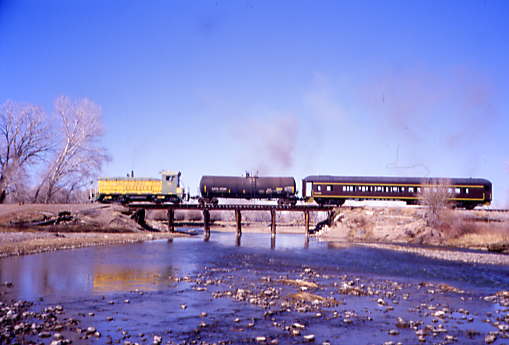
Chris Parker and I arose at 5:45 AM and prepared ourselves for the day ahead then had the Best Western Alamosa Inn's continental breakfast before we packed and checked out. We drove west on US 160, following the rails we rode yesterday, out to Sugar Junction just short of Monte Vista. We turned before the Ace Hardware and soon found the shop, briefly exploring before returning to the parking area at a grade crossing and parked. A few minutes later, Bart and Sarah Jennings arrived and I knew we were in the correct place to board the train. A few more cars parked before Bart walked down to the shop and about ten minutes later, I saw freight cars approaching.
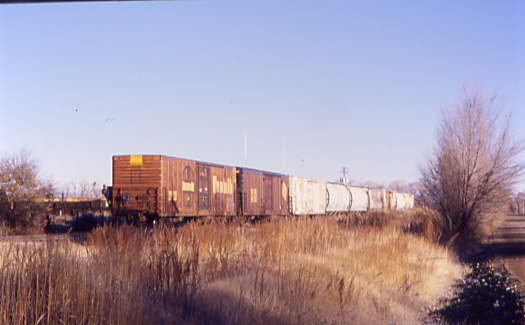
The line of freight cars.
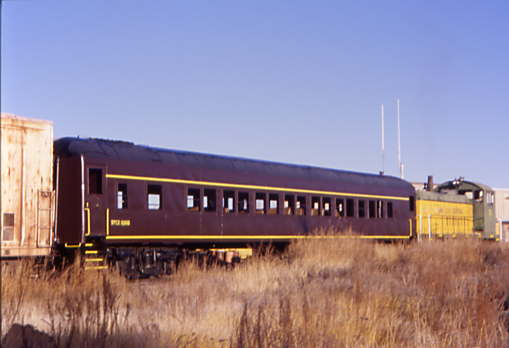
At the end was San Luis and Rio Grande open window coach 5067, ex. Adirondack Scenic Railroad Little Rapids", ex. VIA 5067 1978, nee Canadian National 5067 built by Canadian Car and Foundry in 1967, in which we would be riding.
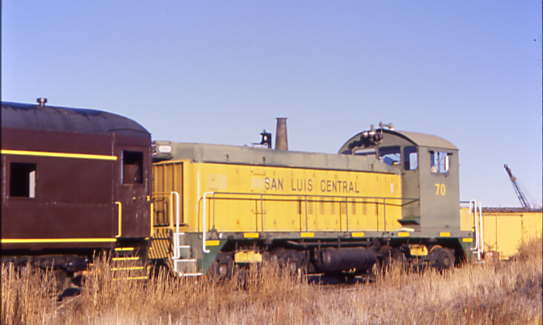
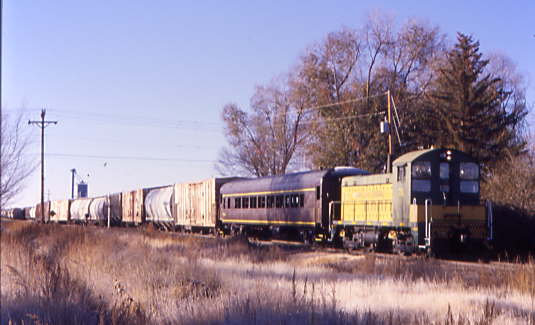
San Luis Central SW7 70 was pushing this cut of cars into their yard at Sugar Junction.
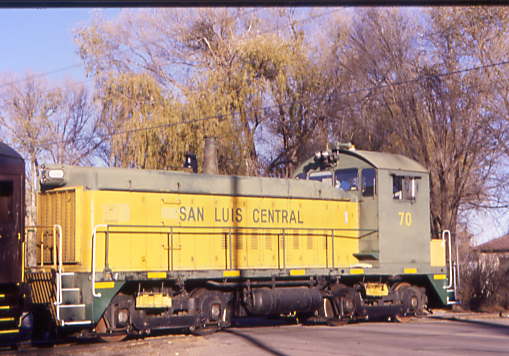
San Luis Central SW7 70, ex. Coors Brewing Company C997, nee Cincinnati Union Terminal 36, built by Electro-Motive Division in 1952..
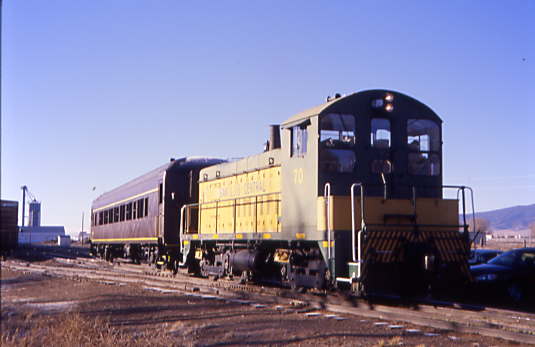
After it cut off from the freight cars, it pulled back in order to spot the passenger car for boarding.
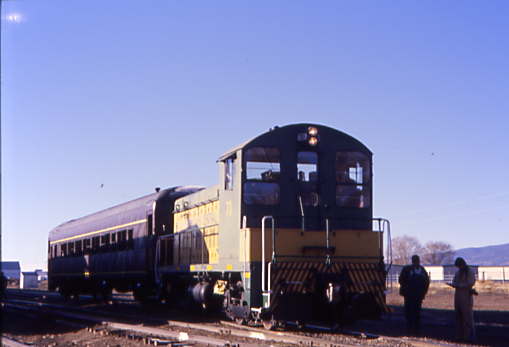
Our train consisted of SW7 70 and SLRG coach 5067. I boarded the coach and found a seat on which to put my bag then realized that this could be a cold and windy trips so I returned to the car for a few things and changed into my long underwear top and gloves then returned to the train to wait for departure time.
San Luis Central Railroad HistoryThe San Luis Cental was incorporated on February 19, 1913, to haul sugar beets for a local sugar mill. The line was completed by September of that year to make the first season's haul. Sugar beet production did not last long, but barley, wheat, potatoes, peas and lettuce still grows in the area and the railroad reportedly moves about 3,000 cars a year. Passenger service did not last long either; the last train ran in 1937, but bus service was used often in the 1920's. Today, the railroad is owned by Pea Vine Corporation.
The ExcursionThe interior of the open window coach.
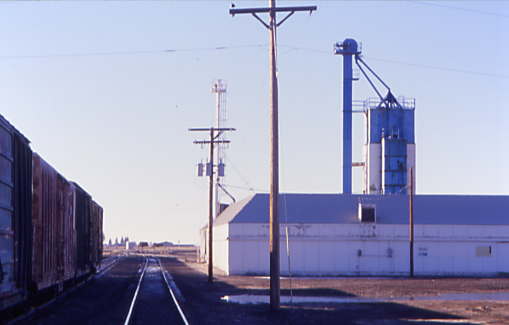
Our journey started by going south and crossing the scale on the way to the interchange with the San Luis and Rio Grande Railroad.
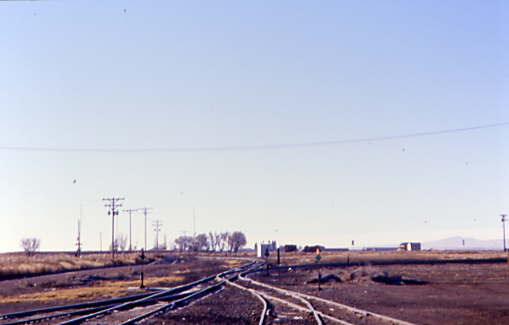
We continued south to the end of the yard.

Our conductor had to throw the switch at the wye so that we could reverse to the US 160 highway crossing.
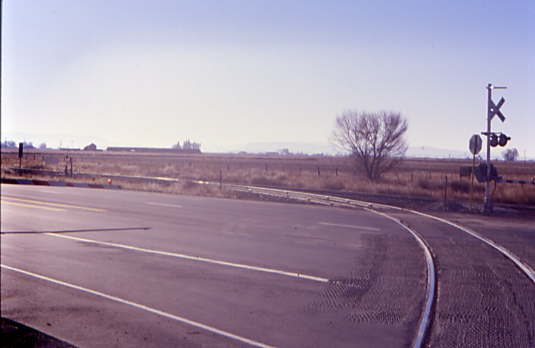
This was the southernmost point of our travels. Our train activated the crossing gates so we did not stay here too long then started the northbound trip to Center at the northern end of the railroad.

We passed through the yard and headed out of Sugar Junction, running by the San Luis Central Railroad shops. A six-storey sugar mill designed to progress sugar beets grown in the area, once stood here.
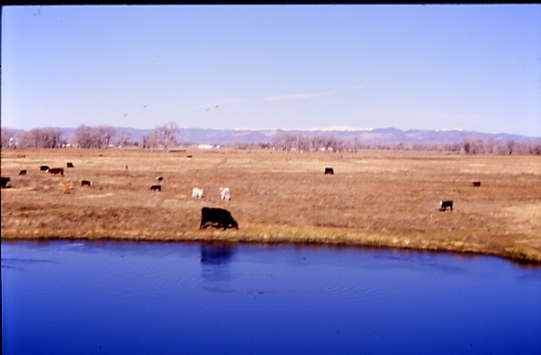
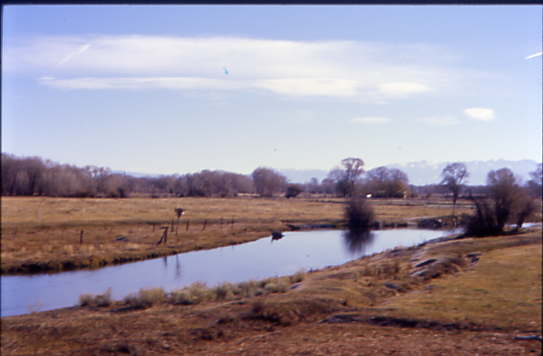
We passed a pond which is here because of our proximity to the Rio Grande River.
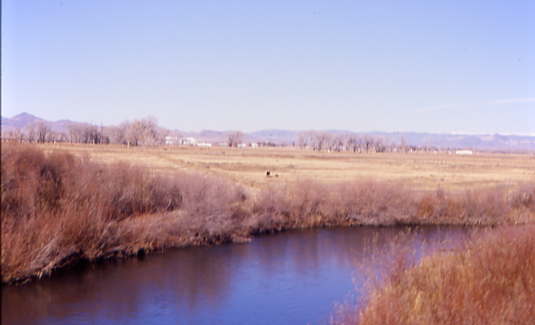
A ditch along our route.
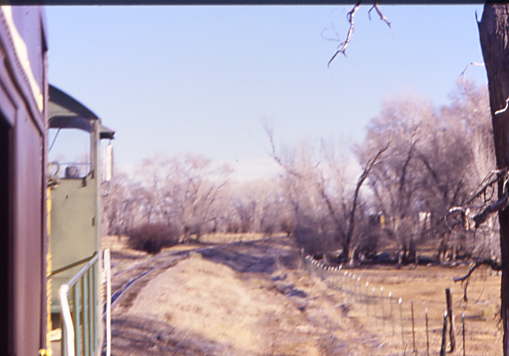
One of the two curves on this railroad.
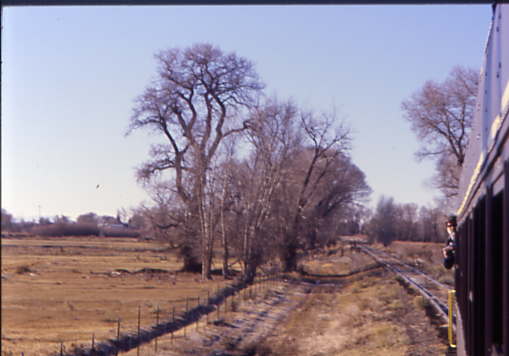
The view back as we started into that curve.
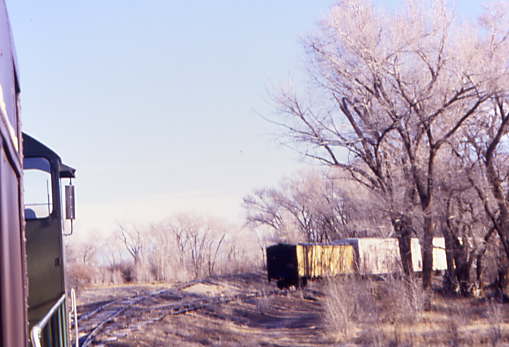
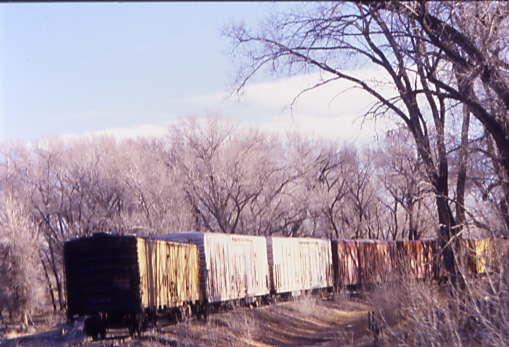
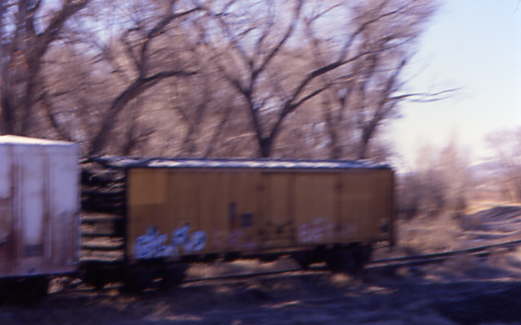
A siding with a line of stored cars.
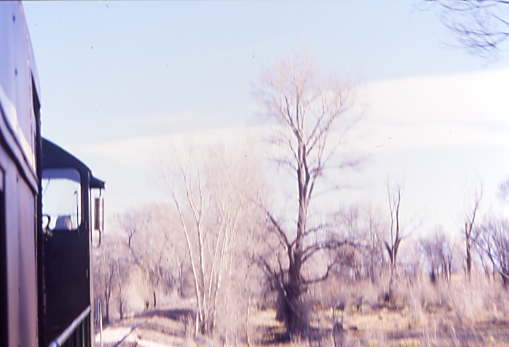
Approaching the bridge over the Rio Grande River where our first photo runby would occur.
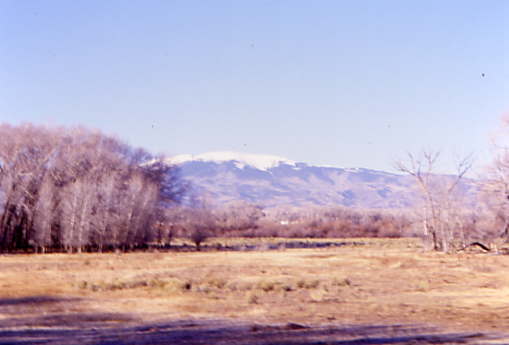

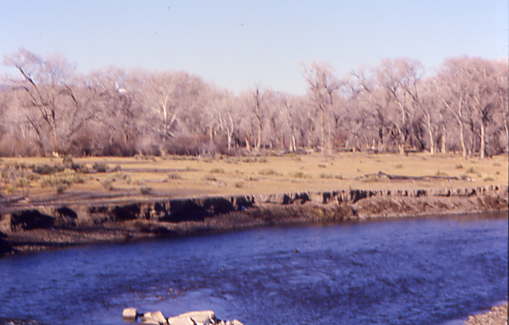
After crossing the river, the train stopped and we all detrained.
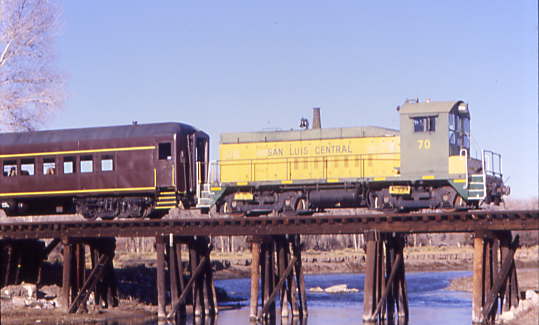
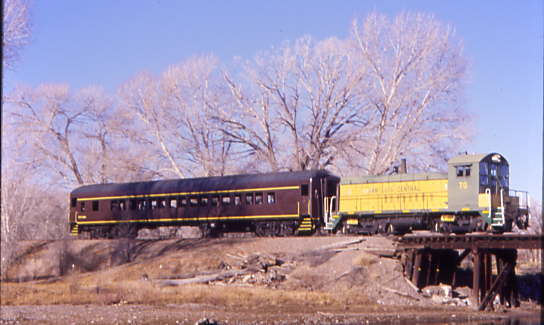
The reverse move across the Rio Grande bridge and the train disappeared from view.

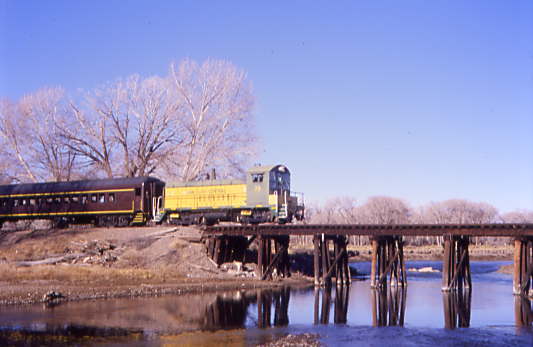
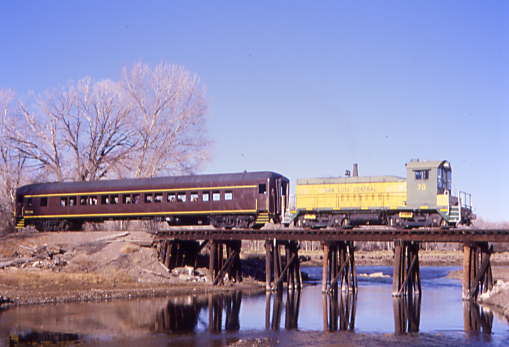
The photo runby was fantastic. We reboarded the train as our next stop was Center.
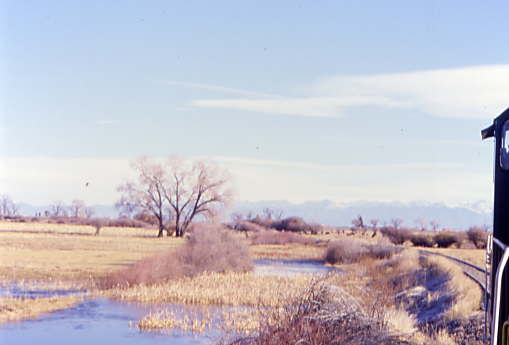
Another low-lying area with water in it as we rounded the second curve.
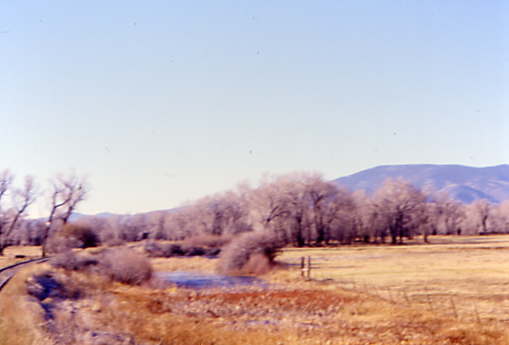
A look back at the curve.

Straight track was the now the order of the day.
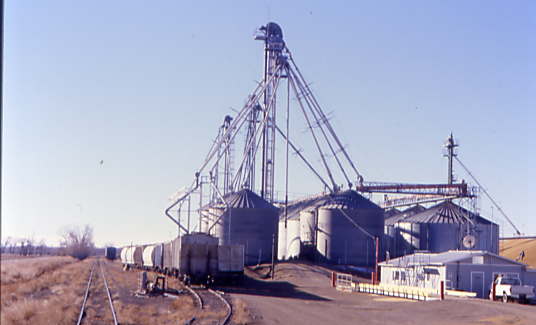
Ggrain silos at North Farm at Milepost 3.0.

The San Luis Valley is a major agricultural area in Colorado.
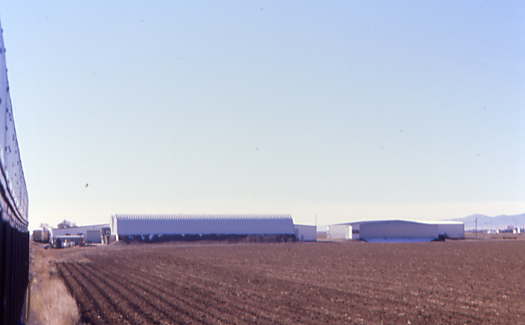
Packing houses which have found new life near Vastine.
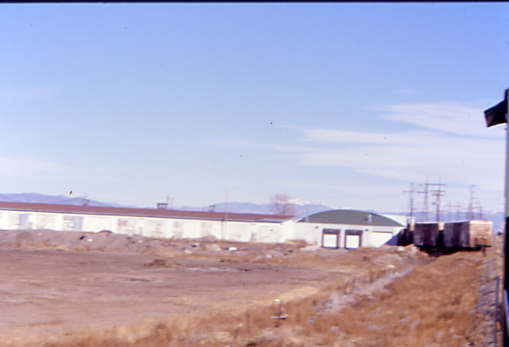
Approaching Vastine, Milepost 4.8. Vastine gives its name to area soils, which is described as a fine-loamy to over sandy. It is deep, poorly to somewhat drained soils that formed in mixed alluvium.

There was a great view to the east of Great Sand Dunes National Park with the mountains behind as we came to Dunul.
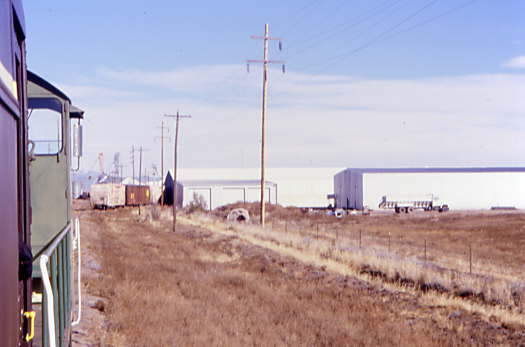
Our train ran through Dunul, Colorado, at Milepost 6.6. Located at 7,647 feet of elevation, Dunul was the site of a series of potato warehouses controlled by the Colorado Potato Warehousing Corporation. The CPWC, organized in June 1925, was a subsidiary of the Colorado Potato Growers Exchange, organized in 1923. The Exchange was formed to eliminate "speculation and waste" in the marketing of potatoes. Twenty different groups bnded together to form the exchange. The organization later add onions (1928) and pinto beans (1968) to its operation. Shares for the Dunul operation were first issued in March 1928.
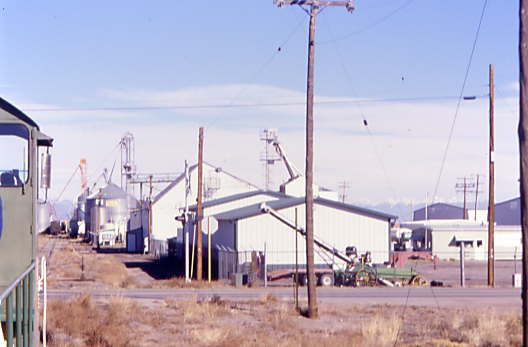
We arrived in Center, Milepost 13.0, and continued on as far north as possible.

The track on which our locomotive would run around our train.
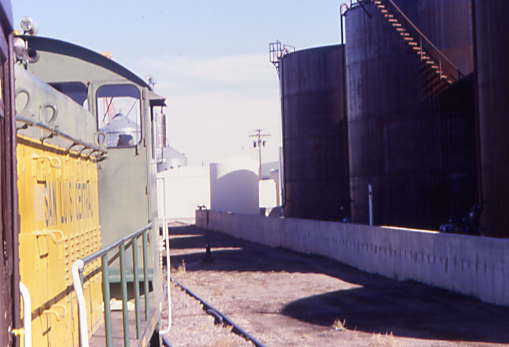
The train went as far north as we could go. It was announced that we would be picking up a tank car to take back to Sugar Junction, which meant that our passenger train would be a "mixed train" for the return trip.
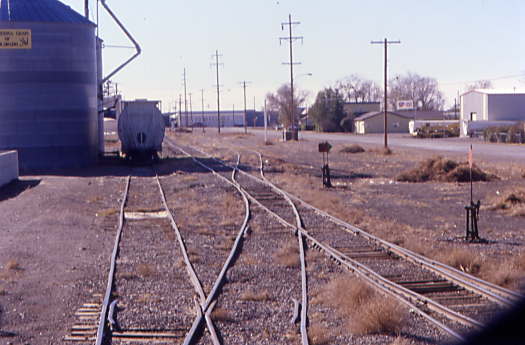
Tracks at Center, Colorado. The Town of Center sits in the heart of the San Luis Valley and the area is economically dependent upon agriculture. The Colorado Potato Warehousing Corporation issued stock for warehouses in Center in April 1927. Having once been Ute land, then Spanish territory, Center has a rich Southwestern heritage.
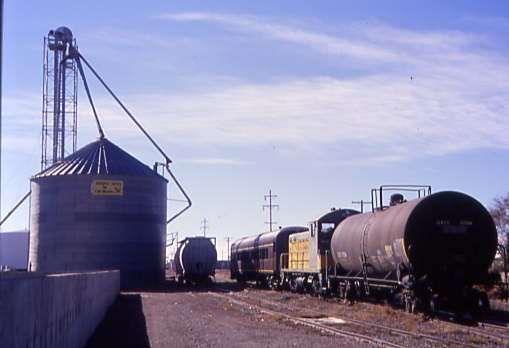
The train reversed to spot the coach as the photographers scrambled to get pictures.
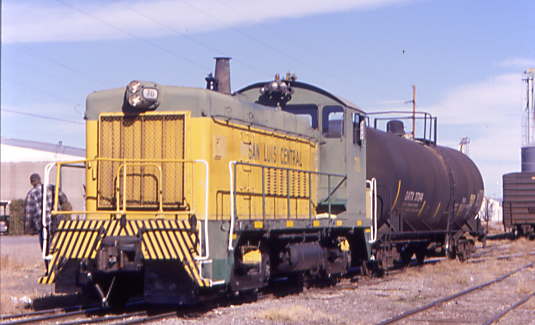
After the engine coupled onto the tank car, it reversed past the switch.

The engine and tank car then ran by the coach.
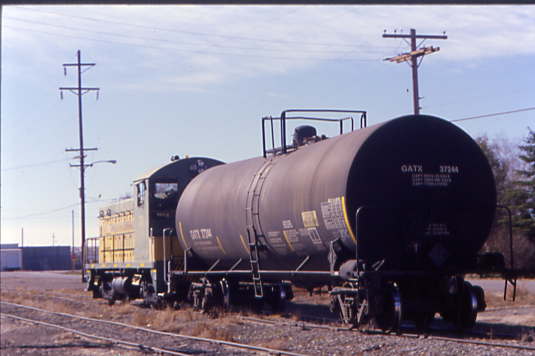
They then went down to the switch before reversing onto our train.
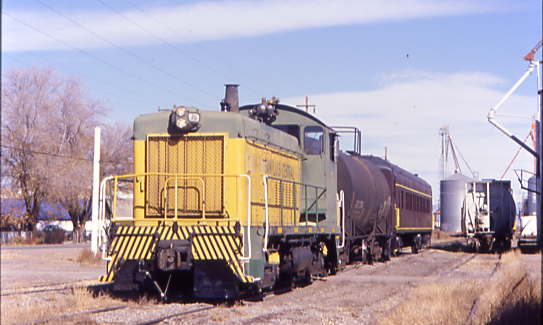
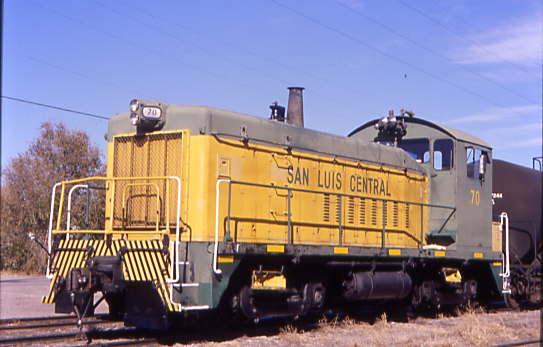
Almost everyone visited a petrol station to use the restroom and purchase snacks and drinks as the train waited to start the return journey.
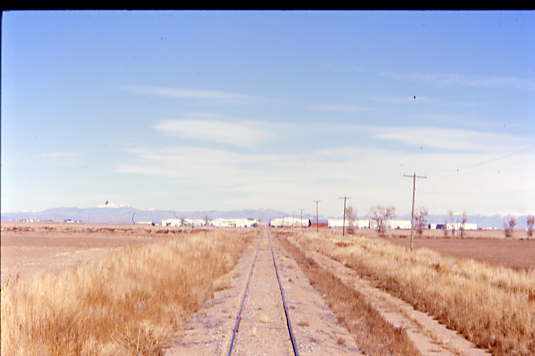
On the way back, the view down the straight-as-an-arrow track.
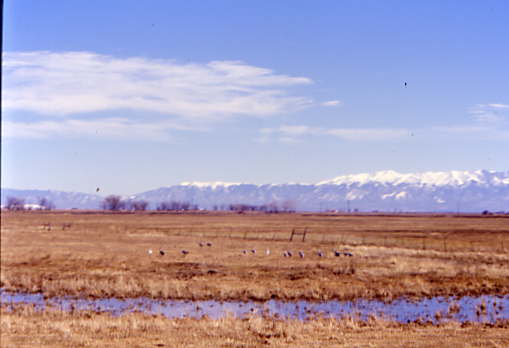
The beautiful mountains that surround the San Luis Valley. I enjoyed talking with the passengers on the return trip and it seemed all too soon that we were back at the Rio Grande River bridge for the final photo runby.
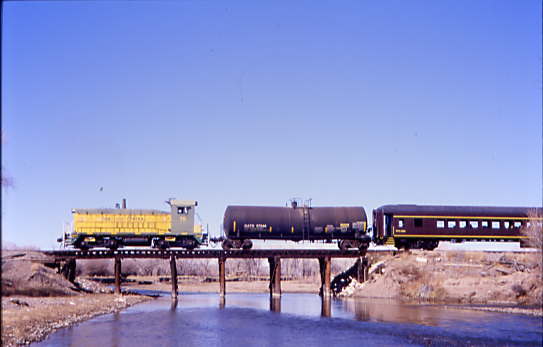
After we detrained and crossed an electrified fence to get to the river, I walked out onto an island to set up for the reverse move.

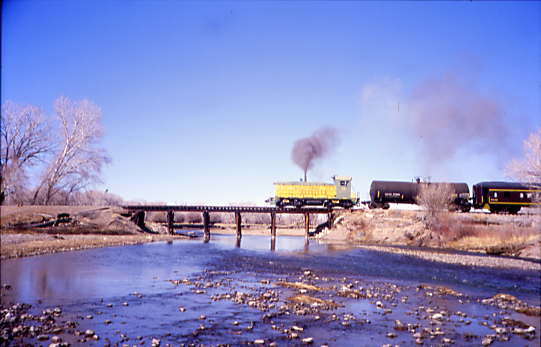
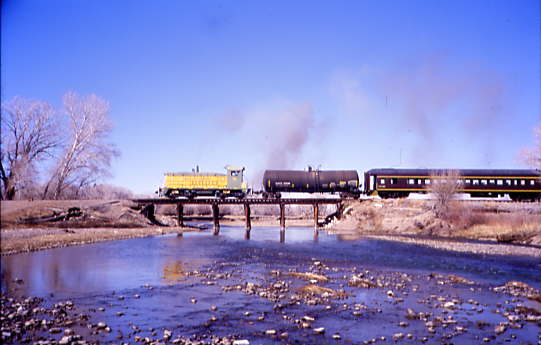

Photo runby two at the Rio Grande River bridge.
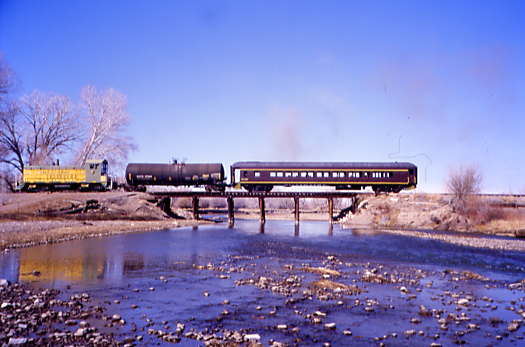
This photo runby was excellent. However, during the reverse move, I ran out of film so decided just to watch the last runby without having to look through a camera. The San Luis Central Railroad SW7 certainly put on a good show!

After reboarding and moving a few yards down the rails, the Rio Grande bridge from the rear of the train.
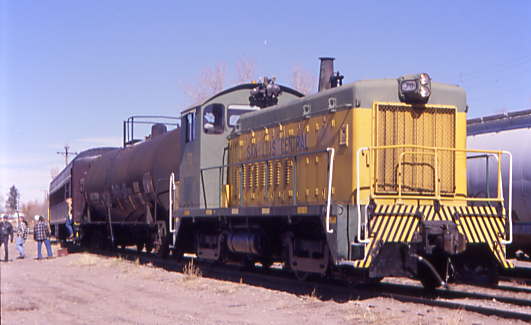
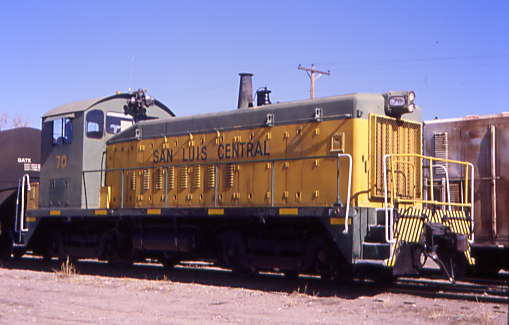
We returned to Sugar Junction.
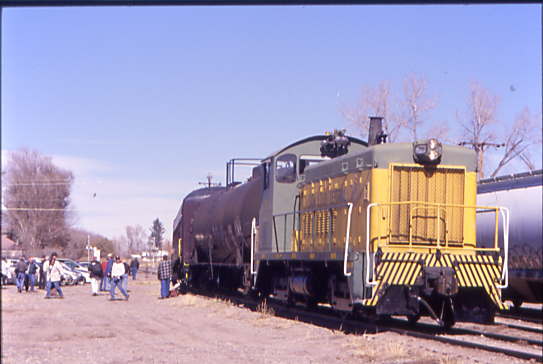
These were two excellent days of rare mileage trips sponsored by the Southern Appalachia Railway Museum on the San Luis and Rio Grande and San Luis Central Railroads. A special thank you to both railroads, as well as Bart and Sarah Jennings, for organiztion them. We said our goodbyes before Chris Parker and I drove off for our next adventure, but that is another story.
| RETURN TO THE MAIN PAGE |